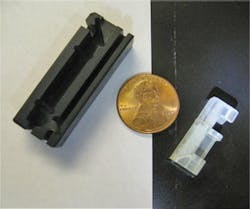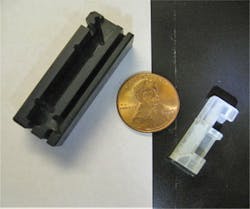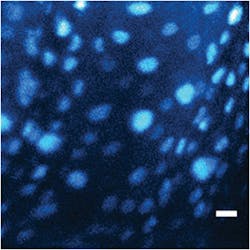ENDOSCOPY/COMMERCIALIZATION: Commercially manufacturable endoscopic probe includes femtosecond laser, two-photon mini microscope
Engineered with off-the-shelf parts, a small, flexible endoscopic medical device with an integrated femtosecond laser has proven able to precisely remove diseased or damaged tissue without touching healthy cells. The device pairs a laser, which generates 200 fs pulses, with a miniature two-photon fluorescence microscope, which uses infrared (IR) light to image individual cells or even cell nuclei 1 mm into living tissue. The optics consist of commercial lenses, a specialized fiber to deliver the laser pulses to the microscope, and a 750 µm micro-electro-mechanical systems (MEMS) scanning mirror.
The entire probe is 9.6 mm in circumference and 23 mm long, fits inside large endoscopes (such as those used for colonoscopies), and is ready for commercial fabrication, says Adela Ben-Yakar of the University of Texas at Austin, the project's principal investigator. However, the first viable laser scalpel based on the design will need at least five years of clinical testing before being FDA-approved.
Ben-Yakar sees many biomedical applications for femtosecond lasers, such as removing small tumors in the spinal cord. Her group is currently collaborating on two projects: Treating scarred vocal folds with a probe tailored for the larynx, nanosurgery on brain neurons and synapses, and cellular structures such as organelles. The researchers are presenting their work at the 2012 Conference on Lasers and Electro Optics (CLEO:2012; San Jose, CA).
More BioOptics World Current Issue Articles
More BioOptics World Archives Issue Articles


